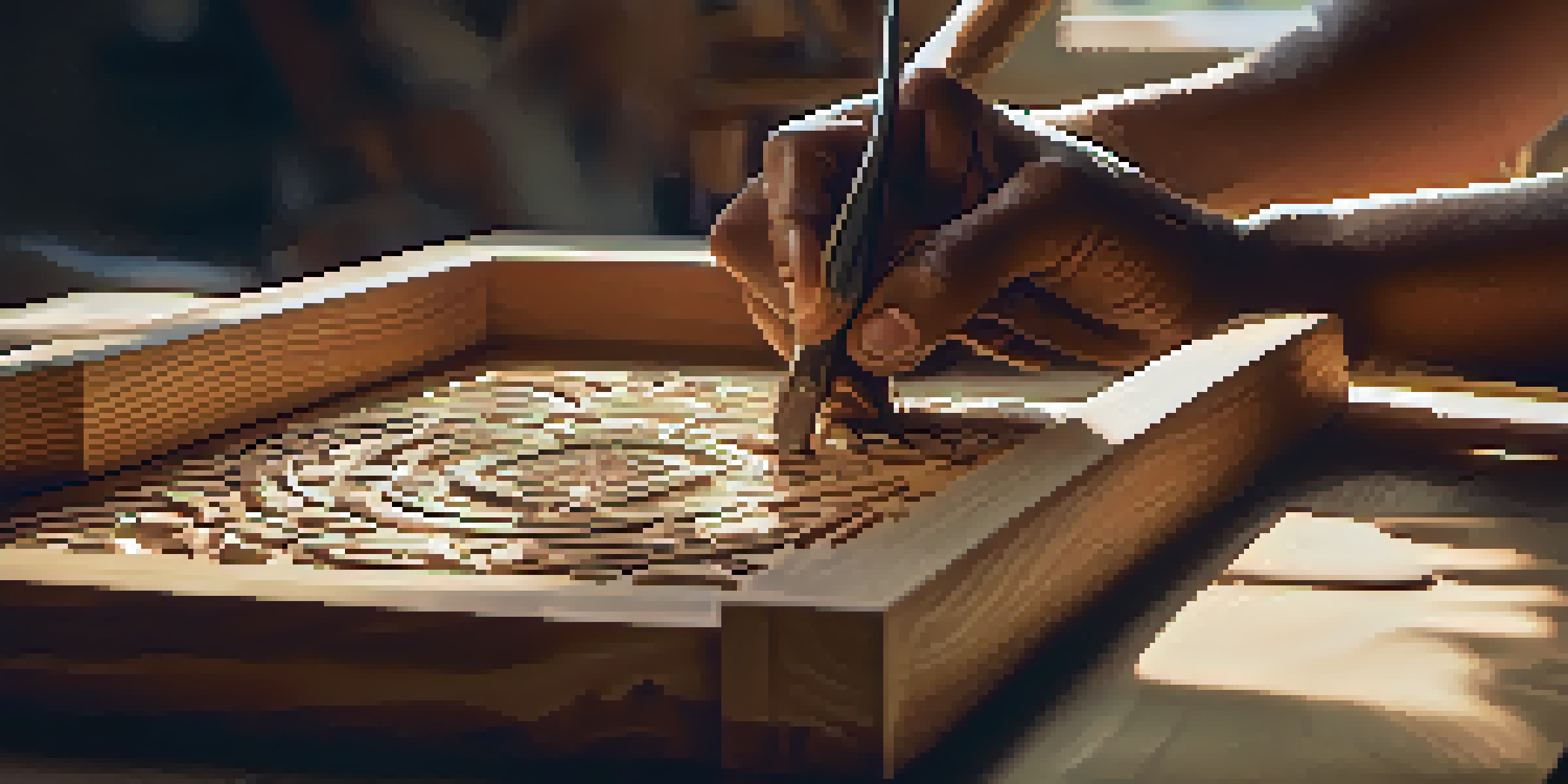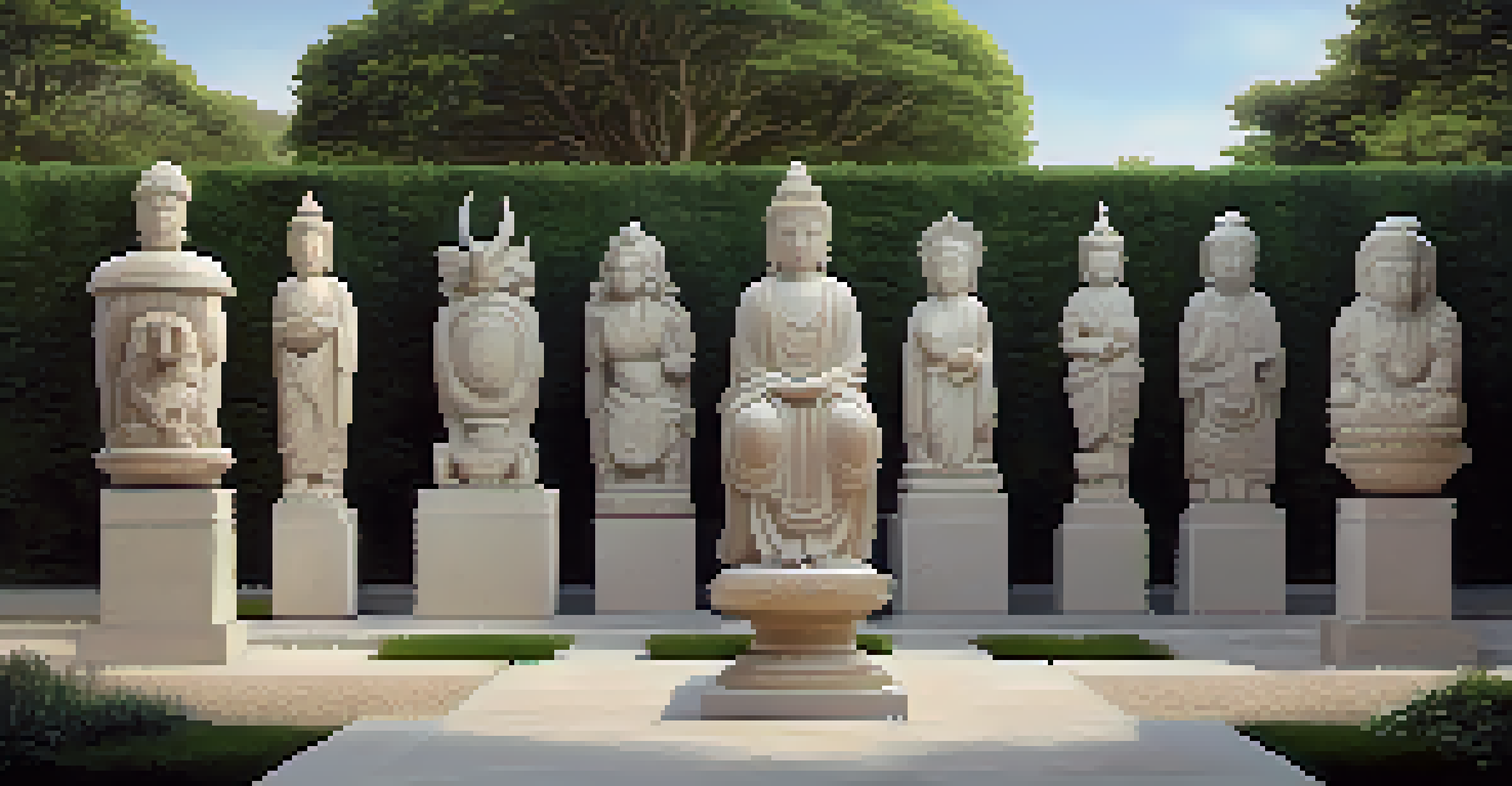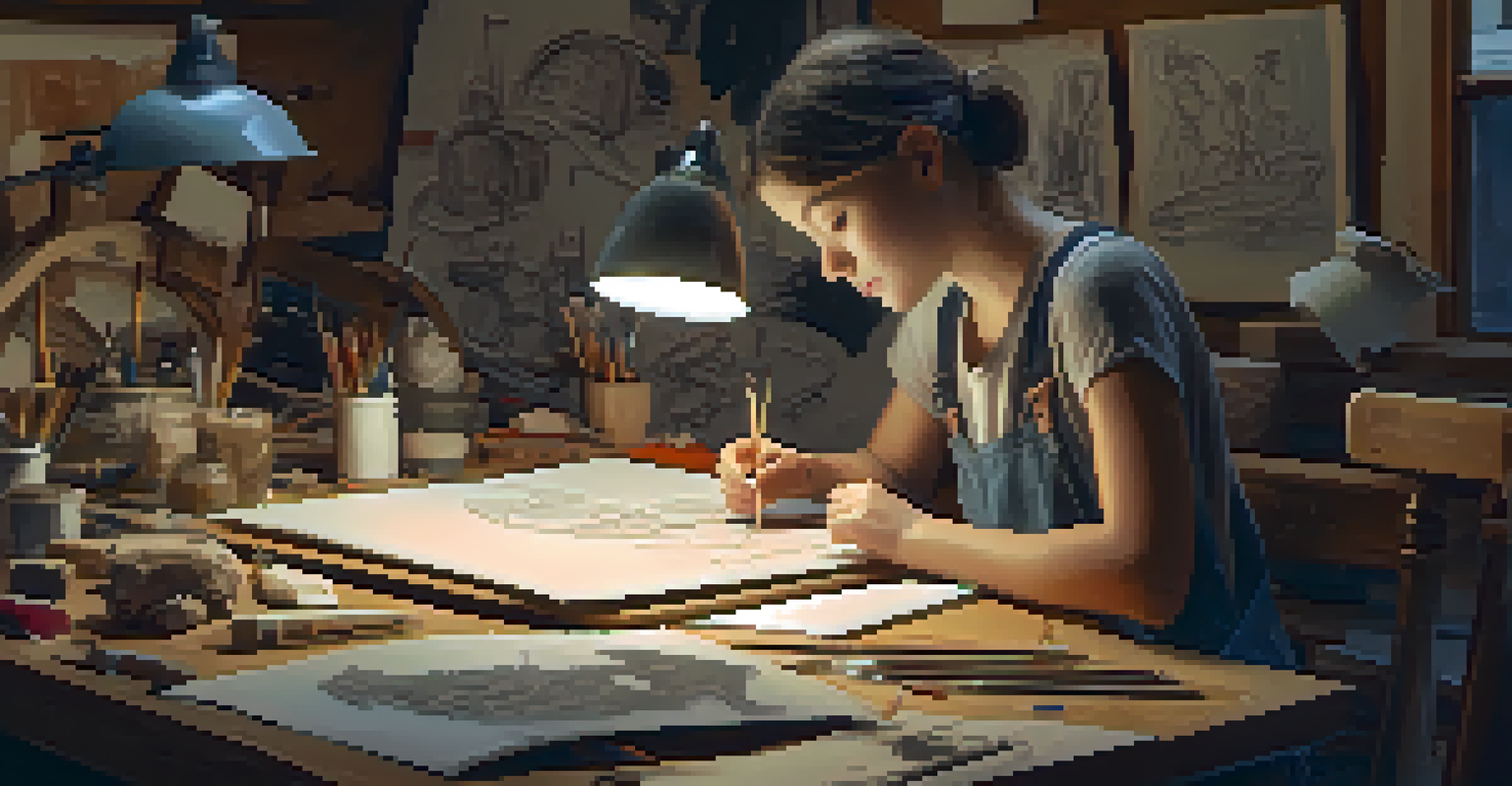Carving as a Medium for Expressing Personal Narratives

Understanding Carving as an Artistic Medium
Carving is an ancient form of artistic expression that involves shaping materials like wood, stone, or bone. This technique allows artists to create intricate designs that can tell stories or convey emotions. Unlike other art forms, carving requires patience and precision, making it a deeply engaging process.
Art is not freedom from discipline, but disciplined freedom.
The tactile experience of carving connects the artist to their medium, allowing for a unique dialogue between the two. As artists chip away at their material, they often find that their work evolves in unexpected ways, leading to personal discoveries. This organic process can reveal insights about the artist's own journey and experiences.
Moreover, carving can serve as a form of meditation, where the repetitive motion helps the artist focus on their thoughts and feelings. This deep engagement with the material can lead to a powerful expression of personal narratives, making the artwork not just a visual piece but a reflection of the artist's inner world.
The Emotional Connection in Carving
Carving is more than just creating shapes; it’s about infusing emotion into the material. Each cut and groove can represent a memory, feeling, or significant life event, allowing the artist to communicate their personal narrative. This emotional connection transforms a simple piece of wood or stone into a vessel of stories.

For instance, a carved figure might represent a cherished relationship or a pivotal moment in one's life. As viewers engage with the artwork, they may find themselves resonating with the emotions embedded in the piece, creating a bridge between the artist's experience and their own. This shared emotional landscape enhances the impact of the carving.
Carving as Personal Expression
Carving allows artists to transform personal narratives and emotions into tangible artworks, creating a deep connection between the artist and their medium.
Additionally, the act of carving can be cathartic for the artist, helping them process feelings and experiences. The physicality of the work provides a tangible outlet for emotions, which can be especially healing during difficult times. In this way, carving becomes a powerful tool for personal expression and storytelling.
Cultural Narratives in Carving Traditions
Carving has rich cultural significance in many societies, serving as a medium to express collective narratives. Different cultures have unique carving styles that reflect their history, beliefs, and values. For example, Indigenous cultures often use carving to tell stories of their ancestors and convey important teachings.
Every artist dips his brush in his own soul, and paints his own nature into his pictures.
These cultural narratives can be visually stunning, often featuring symbols and motifs that hold deep meaning. By carving these stories into materials, artists preserve their heritage and communicate their identity to future generations. This tradition of storytelling through carving fosters a sense of community and belonging.
Furthermore, the revival of traditional carving techniques can help younger generations connect with their roots. As they learn these skills, they not only gain artistic abilities but also an appreciation for their culture's history. This intergenerational transfer of knowledge ensures that personal and cultural narratives continue to thrive.
Personal Narratives: Carving Your Story
Every individual has a story to tell, and carving offers a unique way to share those narratives. By selecting materials and techniques that resonate with them, artists can create pieces that reflect their personal experiences. This process empowers individuals to articulate their stories visually, making the intangible tangible.
For example, someone might choose to carve a piece that symbolizes a significant life change, such as a graduation or a loss. Through the act of carving, they can express complex emotions and commemorate these moments in a physical form. This can be profoundly therapeutic, allowing the artist to confront and embrace their journey.
Cultural Significance of Carving
Different cultures use carving to express collective narratives, preserving their heritage and fostering community through storytelling.
Moreover, sharing these carved pieces with others can foster connections and provoke conversation. Viewers may find themselves inspired by the stories behind the carvings, prompting them to reflect on their own experiences. In this way, carving not only serves as a personal outlet but also as a means of connecting with others.
The Process: From Concept to Creation
The carving process begins with an idea or concept, which is often rooted in personal experiences. Artists typically sketch their designs before bringing them to life, allowing them to visualize the story they wish to convey. This planning phase is crucial, as it sets the foundation for the carving journey ahead.
Once the design is established, artists select the appropriate materials and tools for their project. This choice can significantly impact the final piece, as different materials possess unique characteristics. The act of carving itself requires a delicate balance of technique, patience, and creativity, transforming the initial concept into a tangible artwork.
As artists progress through the carving process, they may encounter challenges that lead to new insights and adaptations. This evolution mirrors the unpredictability of personal narratives, where unexpected turns often lead to richer stories. Ultimately, the journey from concept to creation becomes a narrative in itself.
Exhibiting Carved Works: Sharing Your Narrative
Once a carving is complete, the next step is to share it with the world. Exhibiting carved pieces allows artists to showcase their personal narratives and connect with a broader audience. This exposure not only honors the artist's journey but also invites viewers to engage with the stories behind the art.
Participating in art shows, galleries, or community events can provide valuable opportunities for artists to share their work. These platforms allow for meaningful dialogue about the themes and emotions expressed in the carvings. Engaging with an audience can provide new perspectives and interpretations, enriching the artist's experience.
The Evolution of Carving Techniques
As technology advances, artists are blending traditional carving practices with modern themes, ensuring the medium remains relevant and vibrant.
Moreover, the act of sharing one’s narrative through carving can inspire others to explore their own stories. Art has the power to evoke emotions and provoke thought, and carved works can resonate deeply with viewers. This connection fosters a sense of community and encourages the celebration of individual and collective narratives.
The Future of Carving as a Storytelling Medium
As the world evolves, so does the art of carving. New technologies and tools are emerging, allowing artists to experiment with different techniques and materials. This innovation opens up exciting possibilities for personal and cultural storytelling in carving, ensuring the medium remains relevant.
Moreover, contemporary artists are increasingly blending traditional carving practices with modern themes, creating pieces that resonate with today’s audiences. This fusion of old and new allows for a richer exploration of personal narratives, as artists draw upon their heritage while addressing current issues.

In conclusion, carving as a medium for expressing personal narratives is a vibrant and evolving practice. As artists continue to share their stories through this unique art form, they contribute to a rich tapestry of human experience, connecting individuals across time and culture. The future of carving is bright, promising even more ways to tell our stories.